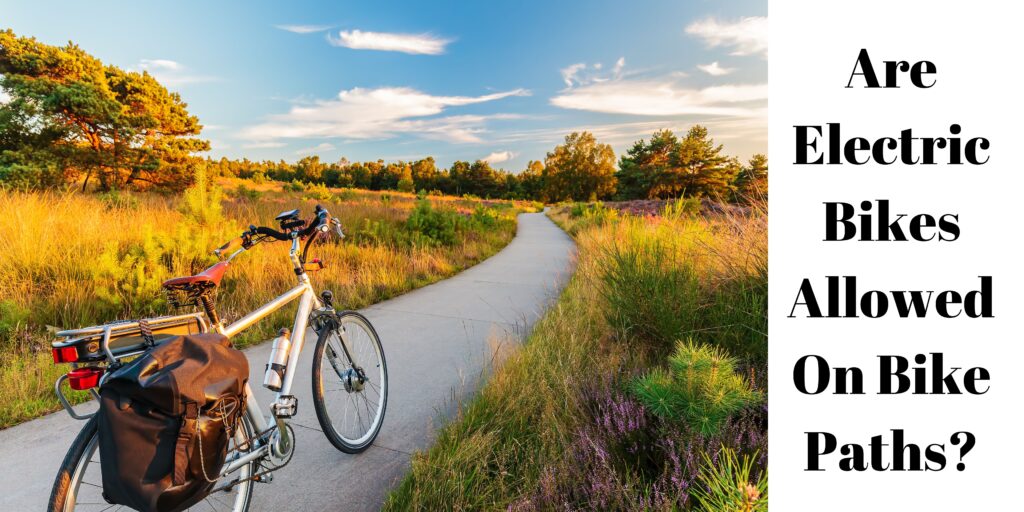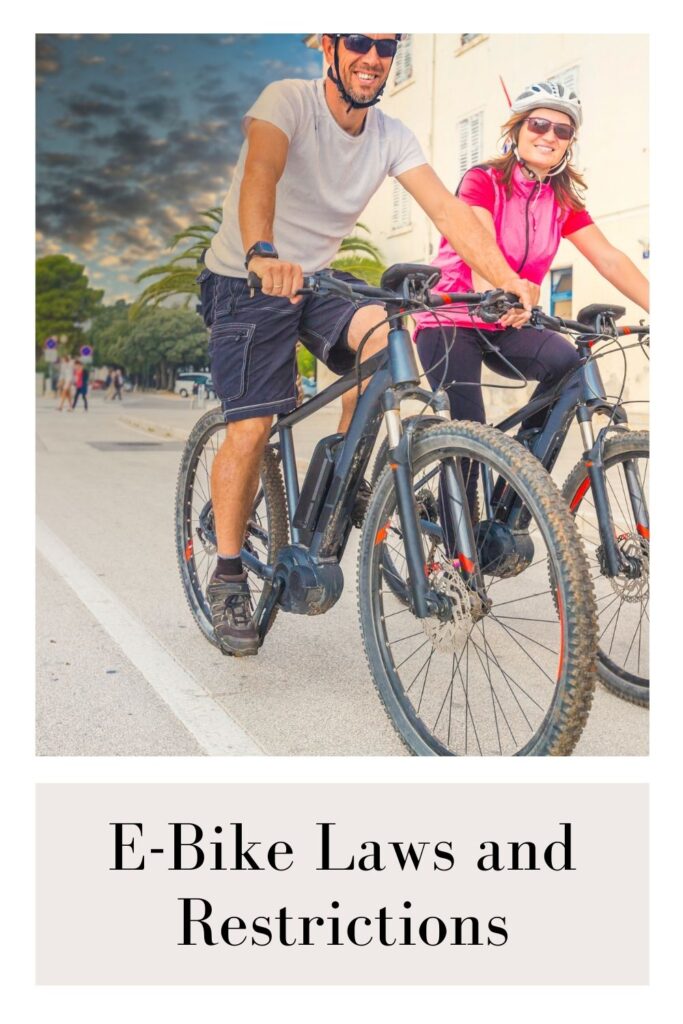Electric bikes, also called e-bikes, perhaps have been controversial about whether they should be classified as bicycles or motorized vehicles like motorcycles because of how they operate. Essentially, electric bikes have an electric motor that may assist the rider by powering them. However, this may not work exclusively without the driver’s efforts. Some bikes are pedal-assists, where the rider can engage the motor by pedaling till it reaches a designated maximum speed. On the other hand, some are throttle-on-demand, and the bike can move without the biker’s effort.
Now, the question of whether electric bikes are allowed on bike paths or trails cannot be answered directly. It depends on factors such as electric bike classes and the local e-bike laws within your city or state.
Classification Of Electric Bikes
To note, the bike industry has developed a three-level classification system to distinguish electric bikes. Each of these classes has its characteristics and features that divide them. These include their power source and maximum assisted speed.
Proper knowledge of each class can lead to the answers sought. That said, here are the three classifications of electric bikes.
- Class I E-bikes
These e-bikes are those whose motors can only run and support when the driver is moving the pedals. The boost they offer continues till it reaches 20 miles per hour (mph). After which, the rider has to proceed with the journey in a personal effort to surpass the limit. These e-bikes work based on the pedal assist.
- Class II E-bikes
These e-bikes work as throttle-on-demand. The throttles can boost a maximum speed of 20 miles per hour without any assisted efforts from the rider. Anything faster than 20 mph would require the sole muscle power of the rider to keep moving.
- Class III E-bikes
Like the class 1 electric bikes, these bikes may also require some effort on the pedals even when the motors are running. However, they have a maximum speed of 28 mph. Anything beyond this limit is the solo effort of the rider. They also come with a speedometer that helps measure the moving speed.
Generally, class 1 e-bikes are allowed on bike paths and city streets. Class 2 e-bikes are also allowed on most city bike paths and streets. On the other hand, class 3 bikes are not permitted on most bike paths and mountain bike trails since they’re allowed to move at a higher speed. And instead, riders may use these e-bikes on the road and on city streets.
Local Rules On Electric Bikes
Today, there are no fixed rules being imposed concerning e-bikes. Each state has its respective e-bike laws and restrictions being implemented. The rules on whether e-bikes are allowed on sidewalks and bike paths, for instance. And more so, if one needs to register the e-bike first, get a license before using one, even age, helmets, and insurance requirements.
In states like Florida, e-bikes are allowed on sidewalks but not on bike paths when powered solely by human efforts. However, states such as Arizona, Utah, and Washington allow e-bikes on sidewalks and bicycle paths.
Moreover, there are also states where e-bikes are allowed to operate on roads but not on sidewalks or bike paths, considering these areas are allotted for pedestrians. These states include Alabama, Alaska, Kansas, Kentucky, Louisiana, Iowa, Massachusetts, West Virginia, Minnesota, Missouri, Nebraska, North Dakota, Vermont, Oklahoma, and Wisconsin.
Furthermore, it is always best to check and review your city’s laws and restrictions before you start using your bike.
Speed Limit on E-Bikes In The United States
Generally, there is a federal maximum speed for e-bikes at about 20 miles per hour. It is corroborated by the three-tiered classification system mentioned above. Class 1 and 2 bikes have a legal limit of 20 miles per hour, and class 3 bikes have a speed limit of 28 miles per hour. Federal law allows e-bikes to travel faster than 20mph if the rider uses a combo of motor power and a human pedal.
Rules and regulations on e-bikes may vary from one state to another. As such, it is essential to be aware of their restrictions for your safety.
Conclusion
Electric bikes have definitions that vary across states and countries. The general law allows class 1 e-bikes on all city streets and bike paths. Class 2 e-bikes are allowed on most city streets and bike paths, while class 3 e-bikes are mostly prohibited on bike trails and paths.
Aside from the information from this article, it is always advisable that you study the law specific to your state and local government before you set out on your electric bike.


